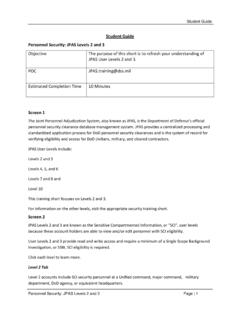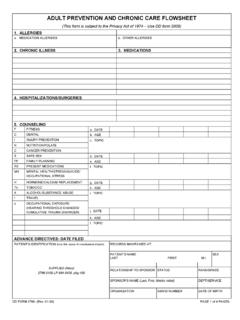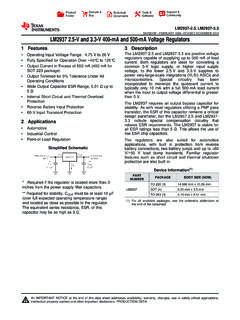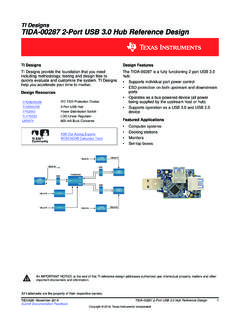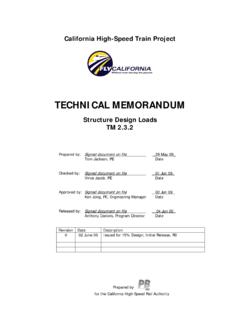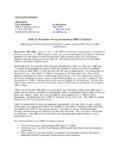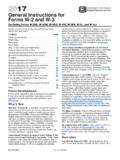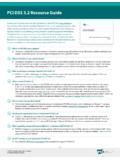Transcription of The 2/3 Classroom - ETFO Peel
1 The 2/3 Classroom A STARTING POINT FOR PEEL TEACHERS. Long Range Plans for Combined Grades Last updated April 2014. LONG RANGE YEAR PLANS FOR. A STARTING POINT FOR PEEL TEACHERS: Long Range Plans for Combined Grades COMBINED GRADE 2 / 3. Acknowledgements The following people made significant contributions to this resource and are gratefully acknowledged PETL Executive WRITING TEAMS ADVISORY SUPPORT. Annette Ackermann Janet Miller Grant PETL New Teacher Committee Pam Evoy Joanne Meyers Executive Liaison/Editor Lisa Graham Tim Cunningham Kurt Uriarte Maureen Murphy Heather Thompson Karen Ott Deborah Solomon Feedback We would love to know what you think! If you would like to offer feedback/suggestions or share units you have created for this resource please contact Kurt Uriarte at Copies are available at LONG RANGE YEAR PLANS FOR COMBINED GRADE TWO/THREE. Last updated April 2014. LONG RANGE YEAR PLANS FOR. A STARTING POINT FOR PEEL TEACHERS: Long Range Plans for Combined Grades COMBINED GRADE 2 / 3.
2 Introduction ONE OF THE LARGEST CHALLENGES for a teacher of a been included. Our hope is that this resource will serve that a teacher must incorporate any new Ontario curricu- combined grade is how to best balance two sets of cur- as a starting point for teachers as they begin to flesh out lum documents after this date of publication. riculum expectations in a wide variety of program areas. the various assessment/instructional tasks and other Your Union will continue to monitor and review the Simply trying to get an understanding of the two curricu- program planning requirements specific to their school implications of combined grades and work with teachers la, looking for possible points of integration and deter- and c lassroom situation. who have concerns with increased expectations on their mining what to teach can be overwhelming for even the It is important to stress that this document is only workload in the area of planning, instruction and report- most experienced teacher.
3 Intended to be a basic framework designed to assist ing. The PETL continues to encourage members to work Over the last few years there has been a marked teachers with support in mapping out the curriculum with us through any work load concerns. For further increase in the creation of combined grades resulting in needs for the year, and is in no way intended to be information on ETFO's position on combined grades visit a greater need for additional support for those teachers adhered to strictly. While using these documents ( who are in these classrooms. teachers will need to use best judgment and possibly Governance/PolicyStatements/ ). This document was created by Peel teachers for Peel adjust the order of units, time lines, material and For further assistance with combined class planning teachers in order to assist combined grade teachers with change/ incorporate additional information as needed the PETL local has purchased the ETFO resource Learn- planning support, by providing a basic framework of to best meet the specific needs of the learners in their ing Together: A Teacher's Guide to Combined Grades.
4 What Long Range Plans might look like for combined Classroom . for all Peel school libraries. grades classrooms. These Long Range Plans were created using the In addition to the Long Range Plans, ideas for unit inte- Overall Expectations (OE) in the Ontario curriculum gration and a variety of tasks to aid in planning have documents a vailable as of April 2014. Please be a dvised LONG RANGE YEAR PLANS FOR COMBINED GRADE TWO/THREE. Last updated April 2014 1. LONG RANGE YEAR PLANS FOR. A STARTING POINT FOR PEEL TEACHERS: Long Range Plans for Combined Grades COMBINED GRADE 2 / 3. Format Definitions Each grade pairing is chunked into four units of time, to BIG IDEA PERFORMANCE TASK. loosely align with the school year calendar, reflecting The Big Idea is the concept which unifies the curriculum Within each subject area specific Performance Tasks are reporting periods. being taught during a specific block of time and is the suggested. idea students should remember long after the unit is over These tasks are separate from the Culminating Task Start-of-Year (Sept/Oct) and details forgotten.
5 And are not integrated with other curriculum areas but Term One (Nov Jan) rather help ensure an overall expectation is covered. Term Two (Feb April) CULMINATING TASKS These tasks may be modified to suit a teacher/class Year End (May/June) The Culminating Task is the final assessment of learn- need, and are used as assessments of learning. Teach- ing for the cross curricular unit and allows students to ers will need to consider skills students require to have Each unit includes Big Ideas, Culminating Tasks, Perfor- authentically demonstrate all the formative learning from been taught prior to or subsequent to the Performance mance Tasks, Subtasks, Guiding Questions and clusters the unit. Task in each subject area. How best to teach the skills of curriculum overall expectations from the Science and In creating the Culminating Tasks the authors were needed to complete the Performance Task is up to the Tech, Social Studies, Language, Mathematics and Arts careful to develop tasks that were engaging and con- professional judgment of the teacher.
6 Strands. (Teachers who teach their own Health and Physi- nected to real world experiences. cal Education or Music will need to i ncorporate this cur- While creating a unit with this long range plan teachers GUIDING QUESTIONS. riculum area.) need to refer back to the Big Idea and ensure all learning Used to encourage critical thinking and guide rich con- experiences lead to the Culminating Task through a versations that reinforce the Big Idea. backward design model of planning. SUBTASKS. The Subtasks help ensure that the skills required to move s tudents forward to complete the culminating task are taught. LONG RANGE YEAR PLANS FOR COMBINED GRADE TWO/THREE. Last updated April 2014 2. September/October BIG IDEA: Interactions and Interdependence LONG RANGE YEAR PLANS FOR. COMBINED GRADE 2 / 3. CULMINATING TASK: Using your research create and present a text (such as a brochure, poster, power point). including the features of a rural/urban community or a province /territory of Canada to promote tourism.
7 Explain the features of the urban/rural community and the physical regions of the province/territory looking at the natural resources/ population, agriculture, businesses (soil, rocks, minerals, living things) of that community and highlight the positive features of that community/province/territory. Overall Expectation and Performance Tasks SCIENCE AND TECHNOLOGY SOCIAL STUDIES LANGUAGE CONNECTIONS MATH CONNECTIONS ARTS. Gr. 2 Growth and Change in Animals People and Environments Oral and Visual Communication Measurement Visual Arts OE1. assess ways in which animals have an impact Grade 2: Global Communities Grade 2 and 3 Grade 2 Grade 2 and 3. on society and the environment, and ways in which B1. Application: describe some similarities and OE1. listen in order to understand and respond OE1 estimate, measure, and record length, perim- D1. Creating and Presenting: apply the creative humans have an impact upon animals and the differences in the ways in which people in two or appropriately in a variety of situations for a variety eter, area, mass, capacity, time and temperature process (see pages 19 22) to produce a variety of places where they live; more communities in different parts of the world of purposes; using non-standard units and standard units; two- and three-dimensional art works, using ele- OE2.
8 Investigate similarities and differences in the meet their needs and have adapted to the location, OE2. use speaking skills and strategies appropri- OE2 compare, describe, and order objects, using ments, principles, and techniques of visual arts to characteristics of various animals; climate, and physical features of their regions (FO- ately to communicate with different audiences attributes measured in non-standard units and communicate feelings, ideas, and understandings. OE3. demonstrate an understanding that animals CUS ON: Cause and Consequence); for a variety of purposes. standard units. Dance grow and change and have distinct characteristics. B2. Inquiry: use the social studies inquiry process to investigate aspects of the interrelationship Reading Measurement Grade 2 and 3. Gr. 3 Growth and Changes in Plants between the natural environment, including the Grade 2 and 3 Grade 3 A1. Creating and Presenting: apply the creative OE1. assess ways in which plants have an impact climate, of selected communities and the ways in process (see pages 19 22) to the composition OE1.
9 Read and demonstrate an understanding of a OE1 estimate, measure, and record length, perim- on society and the environment, and ways in which which people in those communities live (FOCUS of simple dance phrases, using the elements of variety of literary, graphic, and informational texts, eter, area, mass, capacity, time and temperature human activity has an impact on plants and plant ON: Interrelationships; Patterns and Trends). dance to communicate feelings and ideas. using a range of strategies to construct meaning; using standard units;. habitats; Grade 3: Living and Working in Ontario OE2. recognize a variety of text forms, text features, OE2 compare, describe, and order objects, using Music OE2. investigate similarities and differences in the B3. Understanding Context: describe major and stylistic elements and demonstrate under- attributes measured in standard units. characteristics of various plants, and ways in which landform regions and types of land use in Ontario Grade 2 and 3.
10 Standing of how they help communicate meaning. the characteristics of plants relate to the environ- and some of the ways in which land use in various Data Management and Probability C3. Exploring Forms and Cultural Contexts: dem- ment in which they grow; Ontario municipalities addresses human needs Writing onstrate an understanding of a variety of musical Grade 2. OE3. demonstrate an understanding that plants and wants, including the need for jobs (FOCUS ON: Grade 2 and 3 genres and styles from the past and present, and OE1 collect and organize categorical or discrete grow and change and have distinct characteristics. Significance); their social and/or community contexts. OE1. generate, gather, and organize ideas and primary data and display the data, using tally B2. Inquiry: use the social studies inquiry process information to write for an intended purpose charts, concrete graphs, pictographs, line plots, Guiding Question for Grades 2 and 3 Visual Arts to investigate some of the environmental effects of and audience; simple bar graphs, and other graphic organizers, How do our actions affect the quality of our different types of land and/or resource use in two or SUBTASK.
